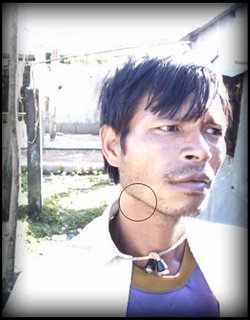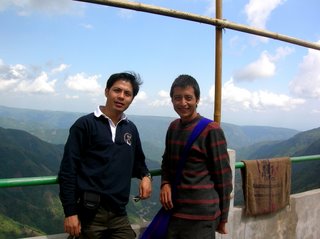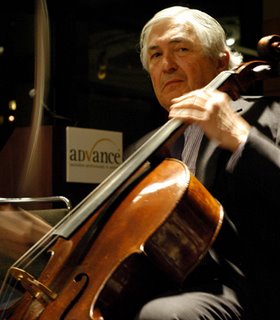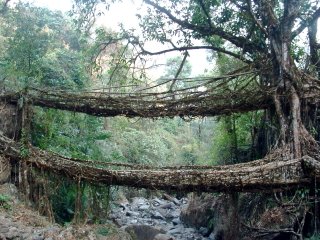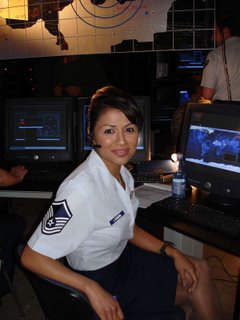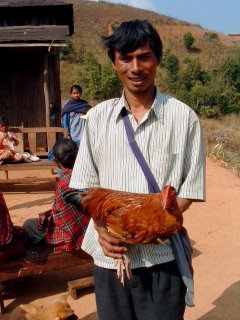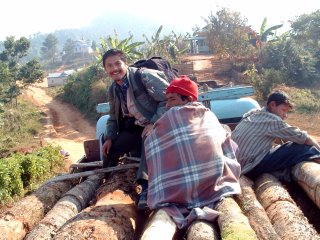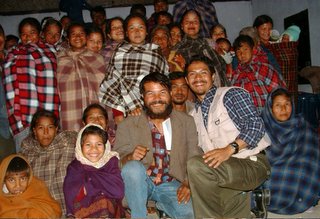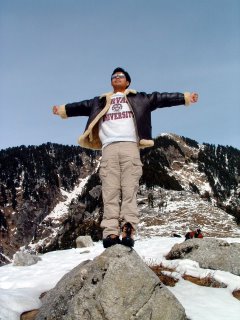 Knowing Kofi Annan, it is fair to say, that he is a thorn in the side of President George W. Bush, at least the liberals in the United States find satisfaction in this of course. But the Nobel Peace Prize winner, originally from Ghana, who has been the Secretary General of the United Nations since 1997, won’t be the UN’s boss forever. So who will replace him in 2007? Well the New York Times reports:
Knowing Kofi Annan, it is fair to say, that he is a thorn in the side of President George W. Bush, at least the liberals in the United States find satisfaction in this of course. But the Nobel Peace Prize winner, originally from Ghana, who has been the Secretary General of the United Nations since 1997, won’t be the UN’s boss forever. So who will replace him in 2007? Well the New York Times reports:“The early scramble to see who will fill the shoes of Kofi Annan has begun, with states and regions trying to bring one of their own into the position of Secretary General of the United Nations and all the bully pulpit privileges that come with it. The latest Iranian attempt, floating the candidacy of President Khatami for the position, was seen, at Turtle Bay, as a diversion. But it also stirred the pot in the hallways, and as world leaders gathered here for a week of meetings, some wonder whether it is too early to ask: Who will be Mr. Annan’s successor? More than anything, the early maneuvering for the position, which will become vacant at the end of 2006, underlines the chaotic method of selecting someone for the high-powered position. To be successful at this stage of the race, one has to feed the rumor mill.”
At the UN, where Mr. Annan is held in high regard, many believe that, as one official put it, “he raised the bar.” And so they assume his replacement has to be someone of stature no more junior than a Foreign Minister. Others assume that Mr. Annan has set another trend: a Secretary General from the ranks of the institution itself. One such candidate whose name is whispered around the halls of the world body is the Under Secretary General for public information, Shashi Tharoor, an Indian-born, British-educated writer with a Hollywood flair whose name is being floated. With what sounded like a well-honed non-denial of his candidacy, Mr. Tharoor told the New York Times: “The Secretary General is barely halfway through his second term. We all have a great deal of work to do to fulfill what remains to be accomplished in this term, and we’re all concentrating on that. I am certainly focused on that.”
On the morning of 29th September 2000 after our daily briefing with Indian Ambassador to the UN, Kamelesh Sharma and the members of the parliamentary delegation at the Permanent Mission of India to the UN, I walked across to the UN headquarters two blocks down the road on 1st Avenue and 43rd Street. It was there that I first met Mr. Tharoor as we shared an elevator going up to the UN Security Council Chamber. I was on my way to listen to my hero President Nelson Mandela, as he was due to brief the Security Council on the peacekeeping operation in Burundi and to report back to the head of my national delegation, Mr. N. D. Tiwari who is the current Chief Minister of Uttranchal. While on the elevator Mr. Tharoor noticed my official red governmental UN identification and other security clearance to enter the chamber after which he asked me what a young man was doing on India’s national delegation. I told him that the day before on 28th September 2000, I had delivered my official youth statement to the 55th Session of the UN General Assembly as India’s first youth ambassador. He then congratulated me, gave me his business card and asked me send him a copy of my statement. It was an honour to have met him at that time. Mr. Tharoor is a great supporter of young people and I have listened to him give a couple talks and once shared a panel with him as well. In addition to being a good UN official he is a fine author. While some argue that he may not be ready for the prime time, I would say that Mr. Tharoor is ready to take on the world body as its youngest Secretary General in its history. I have never seen him display the hard edge that might be needed for the job, but not all good leaders need such a hard edge.

Indeed, while Asia contends that its candidate must become the next Secretary General, some groups disagree. At an inter-regional meeting recently, some members of New Europe contended that while the Burmese U Thant’s term ended as long ago as 1971, one region has never had a secretary general: Eastern Europe, which once was the Soviet bloc. Shashi Tharoor is Under-Secretary-General for Communications and Public Information and has led the Department of Public Information (DPI) since January 2001. In this capacity, he is in charge of the Organization's communications strategy, with particular responsibility for ensuring the coherence and effectiveness of the United Nations' external message.
Prior to joining DPI, Mr. Tharoor served as Director of Communications and Special Projects in the Office of the Secretary-General and as Executive Assistant to the Secretary-General (1997-2001). As Special Assistant to the Under-Secretary-General for Peacekeeping Operations (1989-1996), he assisted two successive heads of United Nations peacekeeping operations in managing the challenges of unprecedented growth and evolution in peacekeeping at the end of the cold war. From 1991 to 1996, he led the team in the Department of Peacekeeping Operations responsible for the United Nations peacekeeping operations in the former Yugoslavia. In 2003, the Secretary-General appointed him United Nations Coordinator for Multilingualism.
Mr. Tharoor's United Nations career began in 1978 on the staff of the United Nations High Commissioner for Refugees (UNHCR) in Geneva. He was Head of the UNHCR office in Singapore (1981-1984) during the peak of the Vietnamese "boat people" crisis.
Mr. Tharoor is also the author of eight books, as well as numerous articles, op-eds and literary reviews in a wide range of publications. He is also the recipient of several journalism and literary awards, including a Commonwealth Writers' Prize.
In January 1998, Mr. Tharoor was named by the World Economic Forum in Davos, Switzerland, as a "Global Leader of Tomorrow". Mr. Tharoor is an elected Fellow of the New York Institute of the Humanities and a member of the Advisory Board of the Indo-American Arts Council.
Born in London in 1956, Mr. Tharoor was educated in India and the United States, completing a Ph.D. at 22 years of age in 1978 at the Fletcher School of Law and Diplomacy at Tufts University, where he also earned two Master's degrees. He was awarded the honorary degree of Doctor of Letters in International Affairs by the University of Puget Sound, United States. Shashi Tharoor is the father of twin sons.
India on 15th June 2006 has nominated UN Under Secretary General Shashi Tharoor for the post of UN chief while seeking support of Asian countries to the principle of regional rotation for the key post. Under this principle, the next UN head should be from Asia when the present Secretary General Kofi Anan demits office. A final decision on the candidate for the top UN post is expected by October. Mr. Tharoor is the first Indian to be nominated for the post. The government’s decision was based on the fact that Mr. Tharoor has impeccable credentials and meets with India's desire to have the august body headed by "a person with strong commitment to UN reforms and the interests of the developing countries".
Our country has already approached other UN member countries through diplomatic channels to seek support for Mr. Tharoor's candidature. I believe that India should get the support, given Mr. Tharoor's internationally acclaimed stature and the fact that under the principle of regional rotation the next UN secretary general should be from Asia. Having had the opportunity to hear Shashi Tharoor speak on various occasions, I must say that I am thoroughly impressed by his clarity of thought. Personally I found him to be highly intelligent and scholarly, while humorous and a sensitive humanist at heart. I am really optimistic of him getting elected as the UN’s Top Diplomat. It would be a greatest honour for the world’s biggest democracy to send its own to head the world body.



